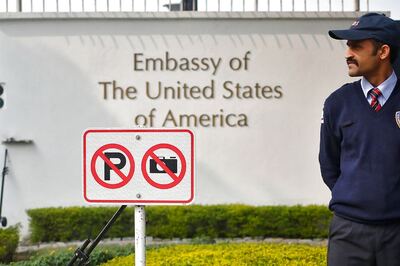
views
With a rise in COVID-19 cases over the last few days and indications that Omicron may result in a fresh wave, states are imposing various restrictions. This is also a good time to remember four things. First, considering Omicron is more transmissible than the Delta variant, this rise in infections is along expected lines. Second, it is not the first time that cases are rising in India. The country has witnessed two national waves. Delhi, in particular, has witnessed at least four COVID-19 waves and each peak was marked by a large number of cases.
Third, in the last two years, the public health community has developed a better understanding of SARS-CoV-2 as well the tools needed to prevent its spread. Fourth, India has reported high sero-positivity—at national level, close to two thirds of those surveyed in June-July had developed antibodies against the virus. In Delhi, sero-positivity was around 90 per cent in September-October. Further, at the national level, 90 per cent of the adult population has received at least one vaccine shot. Scientifically speaking, although vaccines are not known to reduce risk of infection, prior infection and subsequent vaccination essentially means that the risk of moderate to severe disease is low.
Putting these factors together, it does not make much sense to impose harsh restrictions in various states across India. Restrictions imposed under Graded Response Action Plan (GRAP) in Delhi are arguably far too excessive. In fact, to understand the argument better, let’s revisit the purpose of such pandemic-related restrictions.
Omicron is Here, Circulating Widely
In the early phase of the pandemic—much of 2020—the global scientific community was developing an understanding about the virus. Most countries had imposed a variety of restrictions, including lockdowns, which is an extreme step, for two specific purposes. One, to slow down the spread of infection/virus, hoping to prevent the coronavirus from entering new geographical areas. Two, to prepare health systems to respond to those who get infected and require clinical management. However, even with the world’s most stringent lockdown, India could not stop the spread of the virus and the country faced the first wave in September 2020 and the second ferocious wave in April-May 2021. SARS-CoV-2 is now circulating across the country. Although not officially acknowledged by the authorities, community transmission is on.
The emergence of Omicron (B.1.1.529) as a variant of concern has posed a renewed challenge. It is known to be three times more transmissible than Delta (B.1.1.617). However, as more studies have emerged from South Africa and the United Kingdom, the proportion of those infected and developing serious diseases is found to be low. More specifically, the infection is mostly asymptomatic or mild in those with prior infection or vaccination.
Since December 2, when India reported the first case of Omicron variant, new cases of the variant have been reported regularly from different states. Officially reported Omicron cases in India are close to 1,000; however, as confirmation is done after genomic sequencing and only a fraction of the confirmed cases are being sequenced, the actual number of Omicron cases in Delhi (and in India) would be many times higher. In short, Omicron is here and circulating widely.
To respond to the situation, Delhi has implemented the Graded Response Action Plan. On December 28, under GRAP, once the test positivity rate (TPR) crossed 0.5 per cent, yellow alert was issued in Delhi. There is a provision for graded curbs; however, for a TPR of 0.5 per cent, the curbs are really stringent. Many economic activities have been allowed only at 50 per cent capacity. Although scientific evidence shows and global bodies like UNICEF and UNESCO have concluded that schools should be the last to close, but here in Delhi, schools are among the first to close. These are just a few examples.
ALSO READ | Hard Facts Must Inform EC Decision on Tweaking Covid Protocol for Campaigns or Postponing Election
No Time for Statewide Curfews
In medical science and epidemiology, decisions have to be guided by the latest and emerging scientific evidence. Two years since the virus was first reported, imposing harsh curbs is akin to the use of unproven therapies such as hydroxychloroquine or Remdesivir or convalescent plasma therapy for COVID-19 management. The use of these therapies was justified back then, but now we know they do not work; we have to use therapies that have emerged since and have shown results.
Similarly, at this stage of the pandemic, there is limited value in imposing such strict restrictions when the rise in COVID-19 cases is not entirely unexpected. The idea of statewide night curfews is equally absurd and irrational. Delhi along with a number of states and cities have imposed COVID restrictions at night. These curfews might work— to little extent—in cities that have a nightlife busier than day time. In most places in India, the utility of night curfew is questionable.
It is not to argue that there is absolutely no role of restrictions on nightlife. But these have to be applied in a granular, localised and calibrated manner, in a smaller geographical area, based on local epidemiology. However, there is no value in putting uniform statewide restrictions.
At this stage, absolute number of daily new cases is a far too simplistic criteria for mounting an effective pandemic response. Especially, when we know that with the emergence of Omicron, new cases would rise. We have learnt from the evidence emerging from South Africa and the United Kingdom that in a setting like India, with high sero-positivity and where 90 per cent adult population has received at least one shot of the vaccine, most infections are going to be either asymptomatic or mild.
In 2022, state-level pandemic response plans and strategies have to be more nuanced, granular, differential and based on composite indicators. While daily new cases need to be tracked, strategies have to be equally informed by the clinical conditions of those who test positive. If a majority of cases are asymptomatic and mild, the approach has to be different. Hospitalisation-related indicators, such as hospital admission rate, how it is changing, number of patients on oxygen beds, ICU admissions and death rate, must be considered. The local context in terms of sero-positivity and vaccination rate also needs to be looked at. Restrictions on economic activities have to be minimal and graded.
ALSO READ | Let People Deal with Curfews, Politicians Must Enjoy Feel-good Gatherings, Vanity Shows
Need Strategies Based on Science
Fighting the pandemic is an ongoing process and rise in COVID cases is a possibility; imposing harsh restrictions is not the way out. It is time state governments and the disaster management authorities re-examine their guidelines and take measures that don’t impede economic and educational activities.
The share of Omicron in the daily COVID-19 case tally in Delhi and other Indian states is likely to rise in the coming days or weeks. But this rise in cases is not the same as the rise in cases seen a few months ago. COVID response strategies must be informed by emerging scientific and epidemiological evidence.
The focus has to be on directing efforts to protect the high-risk population. Airborne mode of virus circulation should be factored in to deploy strategies—while closed spaces could function at slightly reduced capacity, open spaces including parks and restaurants with open-sitting spaces should be allowed to run at near-normal capacity. Most importantly, response has to be proportionate to the situation at that point in time, with preparedness for a surge. To reiterate, pandemic-related restrictions cannot and should not be statewide at any stage. They should be localised, nuanced and calibrated.
The application of outdated tools and strategies and imposing unscientific and excessive restrictions would delay the problem, not solve it. Only science-based strategies implemented in collaboration with citizens would help in taking the challenge head on and mounting an effective pandemic response.
Dr Chandrakant Lahariya, a practicing physician-epidemiologist, is a public policy and health systems specialist based in New Delhi. The views expressed in this article are those of the author and do not represent the stand of this publication.
Read all the Latest Opinions here




















Comments
0 comment